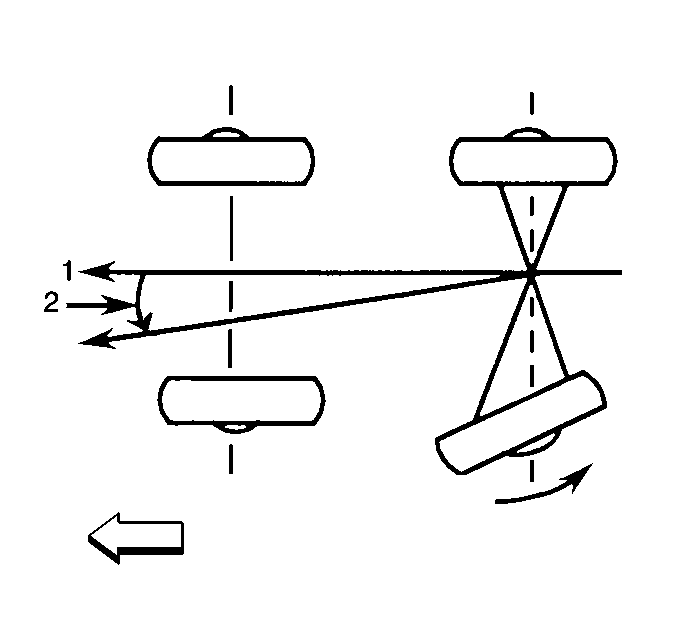
The front wheels aim or steer the vehicle, but the rear wheels control tracking. This tracking action is relative to thrust angle. Thrust angle is defined as the path that the rear wheels will take with the vehicle center line. Ideally, the thrust angle is geometrically aligned. Front wheel drive vehicles introduce another dimension of thrust angles. One of the rear wheels may change due to minor accidents, such as hitting chuck holes. A change in the rear wheel will directly affect the thrust angle by keeping the rear wheels from tracking properly. Other obvious problems may also occur such as the following:
| • | Severe wheel scrubbing, which causes accelerated and unusual tire wear |
| • | A decrease in fuel economy |
| • | Less than optimum handling stability |
No matter what is done to the front of the vehicle, if the rear thrust angle is altered, there may still be handling and rear tire wear problems. Many vehicles leave the alignment machine with perfect front wheel alignments, but the rear wheels are literally dragged down the road because one rear wheel has altered the thrust angle.
